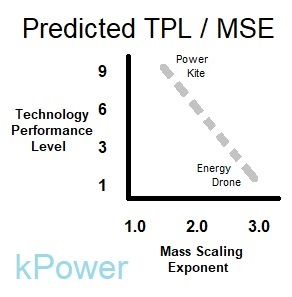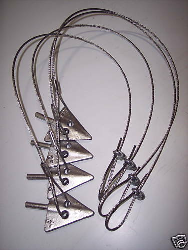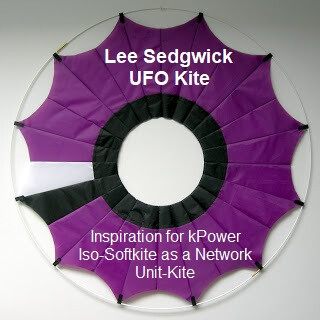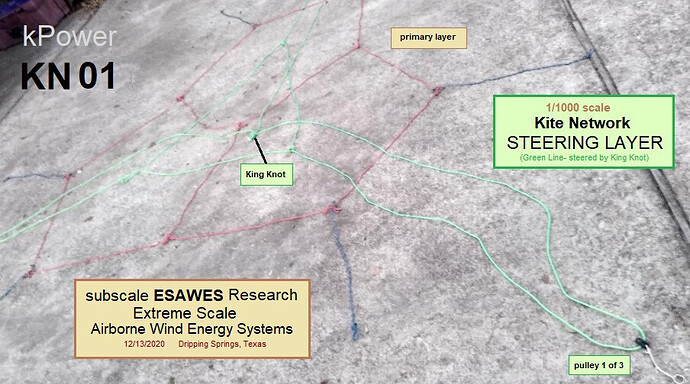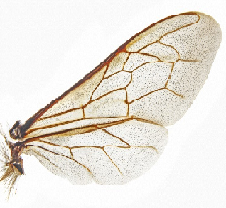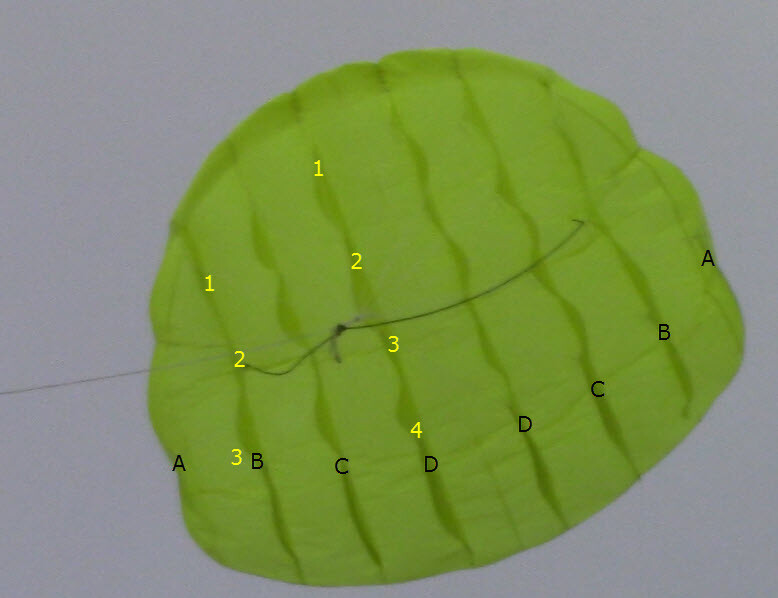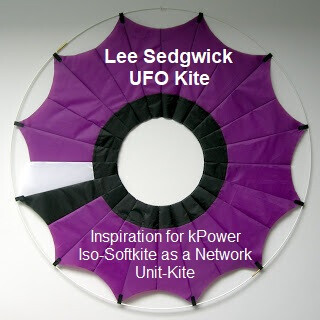Pierre,
A Frisbee flies because it is a decent wing whose Gyroscopic Effect merely stabilizes. Disc wings are well known to fly since ancient times-

Circular Wing Monoplane 250001-11 | Footage Farm - YouTube
Testing will prove Multi-r Kite Networks are not as hopeless as you fear.
I personally know Moritz. We met for long discussion in his Leuven office, and toured his Lab. I read all his papers carefully, and we fully agree on basic aerodynamics.
In the paper you cite, nowhere does Moritz does support specific misconceptions about AR L/D dependence. As an “old” paper, it hardly touches on Kite Networks, which have surged in interest since. It omits advanced aerodynamic kite pumping modes like Dynamic Stall, and other recent insights.
Moritz properly states the MSE issue, just like MarkusS and I do-
“A limiting factor for large airborne systems will be the square-cube law, namely the fact that the wing area scales quadratically with the length scale, while the mass scales cubically.”
He cites an Airbus 380 Wing Reference Model with an
" airborne mass of 39 tons to generate 34 MW. To be on the conservative side, let us reduce this hypothetical power to 30 MW"
This is less than 1MW per Ton for such a wing. (further below) Moritz cites SkySails at 2MW for a kite that weighs 0.2 Ton. That’s roughly equal power-to-mass (Makani’s 10-to-1 soft to rigid equivalence), but soft power kites are cheaper to buy and maintain, work in lower (more probable) wind, and survive longer (survive to payback).
Moritz gives large power-kites their due, and is optimistic about unit-scaling. He addresses Wing Loading (without using the term)-
" Flexible wings…made extremely lightweight for a given surface area. In case of a crash, they usually do not cause major damage…much safer to operate. They fly with moderate speeds and can easily be controlled by a human pilot (or passively). In contrast to this, rigid wings…need more mass per m2 wing surface. Due to their higher lift to drag ratio, they can reach very high velocities, which comes with the benefit of significantly higher power output per wing area, but also the danger of considerable damage in case of a crash."
“SkySails has reported traction power generation of up to 2 MW with a single kite system…an open question which single AWE system sizes would be most economical: any size between 40 kW and 40 MW seems possible, where the 40 MW system would need a wing with a span of about 100 m but would suffer relatively little from tether drag.”
kPower thinks 10MW unit-power is the sweet-spot, based on ship-kite expertise.
Don’t overlook how the extreme-scale iso-Kite-Network paradigm applies crosswind motion. A Kite Network the size of a small city might sweep “only” 1 km crosswind each way, and seem like a mere “wiggle” as Doug puts it, at low AR, but prove plenty to make power.
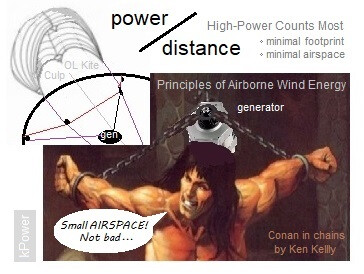
Beware the “Sportscar Fallacy” in AWES design. We need a Truck.
Doug asked, with regard to Kite Networks R&D:
“When? Where? By whom?”
AWE should continue on the predicted curve (2011, WoW) of Critical Path Analysis, with SkySails100 as a 2020 AWES benchmark, to 2030 TRL9 utility-plant scale roll-out, the “Tehapachi Phase”, and thereafter become a worldwide major industry led by millions of pros. Some developers active now will hang on throughout these R&D stages. 2050 could be transformative, Etzler’s AWE Utopia. Time will tell.
In just 20yrs, Doug has witnessed a tremendous explosion in AWE knowledge and capability, mirrored by the Kite Sport Revolution. If only he was not so unreasonably impatient for AWE to mature even faster, he might be happy.
